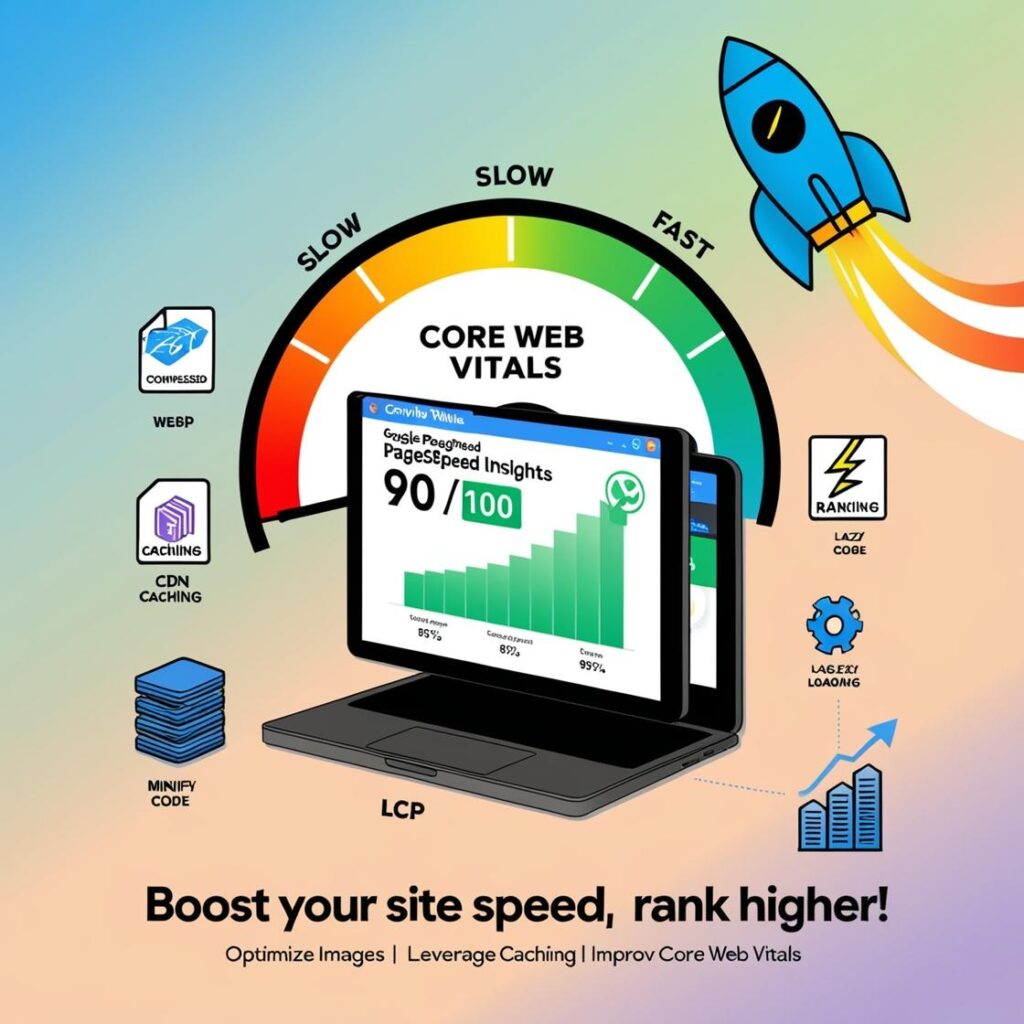
Introduction
In today’s fast-paced digital world, website loading speed is a critical factor for both SEO success and user satisfaction. A slow website drives visitors away, increases bounce rates, and signals to search engines like Google that your site offers a poor user experience. This guide breaks down proven techniques to optimize your site’s speed, ensuring it ranks higher and keeps users engaged.
Why Website Speed Matters for SEO
Google explicitly prioritizes page experience in its ranking algorithm. Key metrics like Largest Contentful Paint (LCP) and Core Web Vitals directly impact your visibility. Faster sites also enjoy:
- Higher conversion rates (a 1-second delay can drop conversions by 7%).
- Lower bounce rates (53% of mobile users abandon sites that take over 3 seconds to load).
- Improved crawl budget, helping search engines index more pages efficiently.
Key Factors Affecting Website Speed
1. Hosting Service
A reliable hosting provider ensures server stability and reduces downtime. Opt for dedicated hosting or cloud-based solutions for resource-heavy sites.
2. Image Optimization
Compress images without sacrificing quality using tools like TinyPNG or ShortPixel. Use modern formats like WebP for faster loading.
3. Code Minification
Remove unnecessary characters from HTML, CSS, and JavaScript files. Tools like UglifyJS or WordPress plugins (e.g., Autoptimize) automate this process.
4. Browser Caching
Leverage caching to store static files locally on visitors’ devices, reducing repeat load times. Configure via .htaccess or plugins like W3 Total Cache.
Explore WhatsApp iOS Update
Top Tools to Measure Website Speed
- Google PageSpeed Insights: Analyzes performance metrics and provides actionable recommendations.
- GTmetrix: Combines Google and Lighthouse data with waterfall charts for in-depth insights.
- Pingdom: Tests speed from global servers and tracks historical performance.
Step-by-Step Guide to Improve Loading Speed
- Optimize Images
- Resize images to match display dimensions.
- Use lazy loading to defer off-screen images.
- Enable Compression
- Enable GZIP compression via your hosting dashboard or plugins.
- Reduce Redirects
- Audit unnecessary redirects using tools like Screaming Frog.
- Use a Content Delivery Network (CDN)
- Distribute content globally via CDNs like Cloudflare or StackPath to reduce latency.
Common Mistakes to Avoid
- Overloading with Plugins: Too many plugins slow down WordPress sites. Audit and remove unused ones.
- Ignoring Mobile Optimization: Ensure responsive design and AMP (Accelerated Mobile Pages) for mobile users.
- Skipping Regular Audits: Monitor speed monthly using the tools mentioned above.
Conclusion
Improving website loading speed isn’t a one-time task—it’s an ongoing process that directly impacts SEO and user retention. By optimizing images, leveraging caching, and choosing the right hosting, you can create a faster, search-friendly site. Start implementing these strategies today to outpace competitors and secure top rankings.
Ready to speed up your site? Bookmark this guide and schedule a monthly performance check to stay ahead!
-
Safest Jobs in the Age of AI – Insights Inspired by Geoffrey Hinton

As artificial intelligence (AI) continues to evolve at an unprecedented pace, one burning question echoes across boardrooms, classrooms, and factory floors alike: Which jobs are safe from AI? Geoffrey Hinton,…
-
Google Introduces ‘AI Mode’ in Search

Google has officially launched its much-anticipated Google AI Mode, marking a significant transformation in how people interact with search engines. This innovative feature represents the tech giant’s ambitious step toward…
-
The Future of AI in Data Science by 2026

The future of AI in data science is unfolding faster than ever imagined, and this comprehensive guide reveals exactly what the landscape will look like by 2026. Based on cutting-edge…